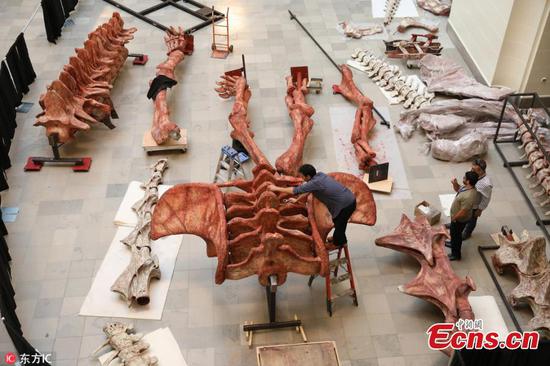Using the Titan supercomputer, an international research team Wednesday released a groundbreaking precise calculation of a fundamental property of protons and neutrons, known as the nucleon axial coupling.
The new calculation provides the research community with a critical benchmark for applying lattice quantum chromodynamics (QCD), according to the new study published in the journal Nature.
Ultimately, the calculation and others enabled by the team's computational technique could aid in the search for dark matter and help answer other outstanding questions about the nature of the universe, researchers said.
Lattice QCD, a numerical method for calculating the underlying physics of the subatomic particles that make up protons and neutrons known as quarks and gluons, "is the only way we know how to compute properties of strongly interacting matter directly from fundamental theory," Andre Walker-Loud, lead researcher of the U.S. Department of Energy's (DOE's) Lawrence Berkeley National Laboratory said, as quoted by Oak Ridge National Laboratory (ORNL)'s press release.
"For about a decade it has been an important predictive tool for high-energy physics," said Walker-Loud.
Although lattice QCD is often applied in the atom-smashing world of high-energy physics where scientists model particles interacting within very short distances, it offers a less manageable approach due to the size of protons and neutrons.
Instead low-energy, or nuclear, physics problems are often modeled using data-driven, approximate methods.
By applying lattice QCD, the team calculated the nucleon axial coupling with an unprecedented one percent precision, meaning all their computational results were in close agreement, or reside within a narrow distribution. The results also accurately matched long-standing experimental results.
"For us to do it with one percent uncertainty required us to develop new ideas," Walker-Loud said.
With Titan, the team's improved computational strategy reduced the amount of statistical sampling needed for an accurate answer, and graphics processing units, or GPUs, accelerated the subsequent computations.
Titan ranks among the world's most powerful supercomputers at the Oak Ridge Leadership Computing Facility, a DOE Office of Science User Facility located at DOE's ORNL.
"The most computationally expensive calculations could only be performed on Titan, which enabled us to do our calculations about 100 times faster than we would have been able to do so otherwise."
Researchers believe that the data from supercomputers will help scientists to solve other physics problems by reducing the supercomputing cost of additional results.


















































